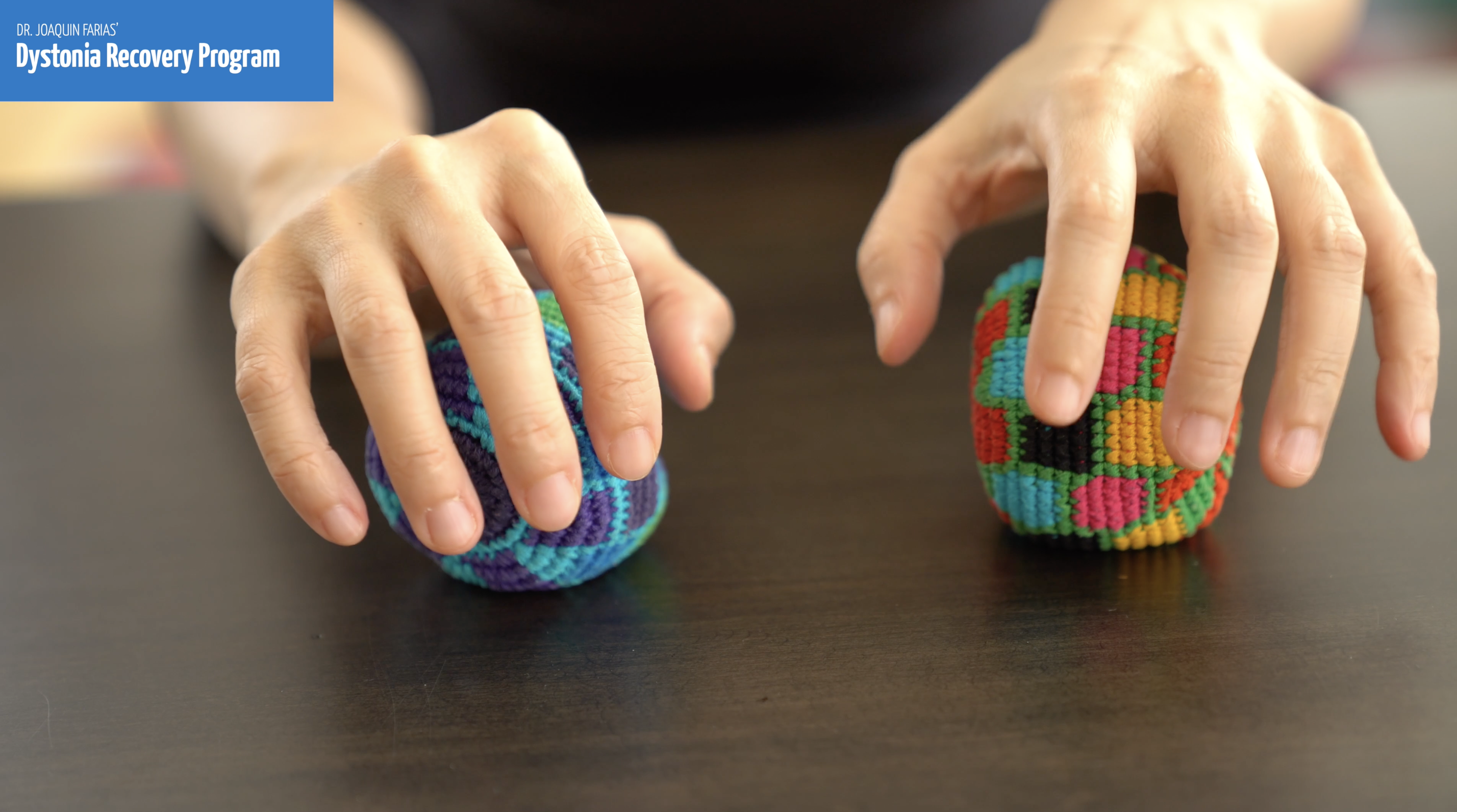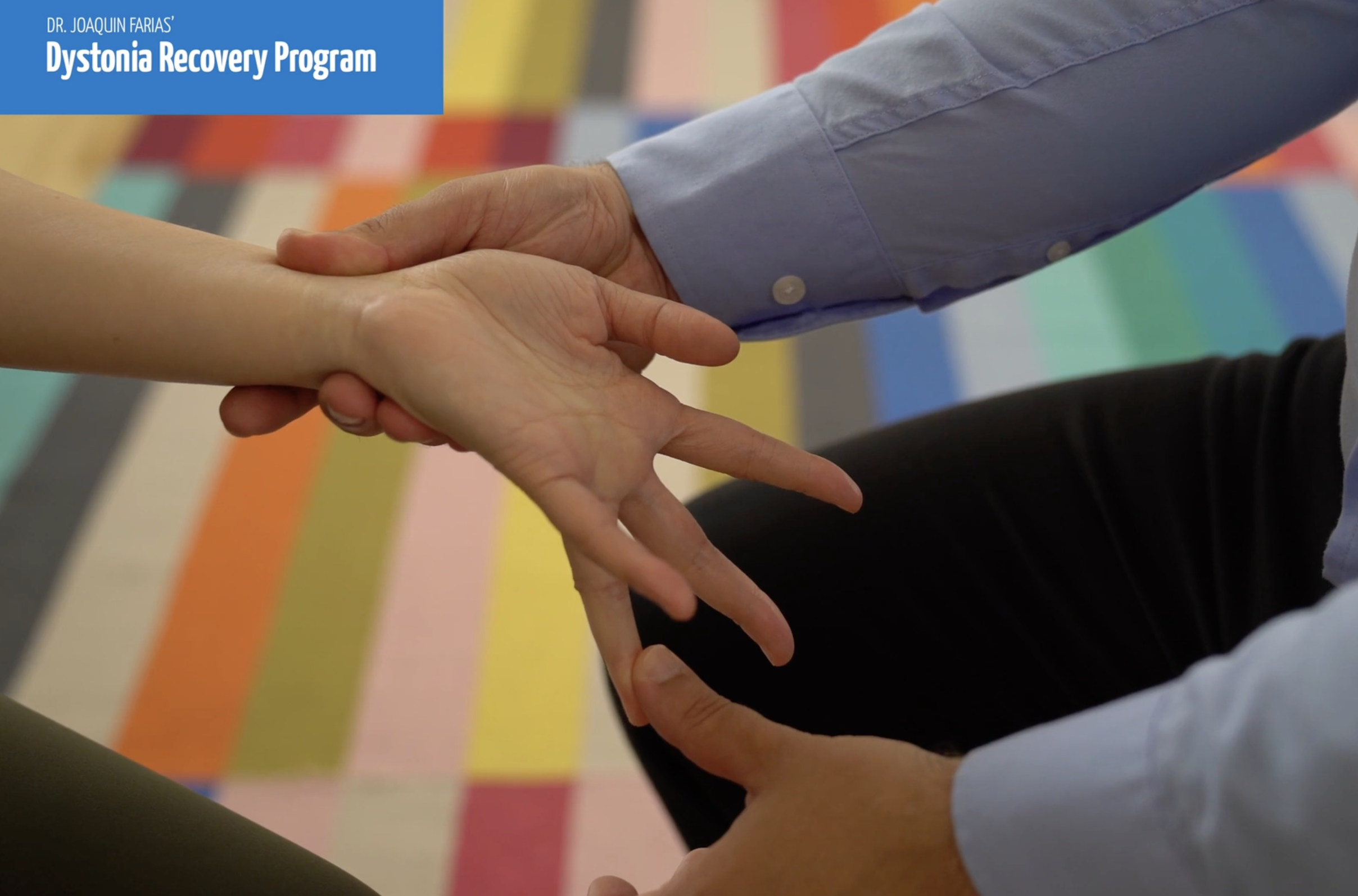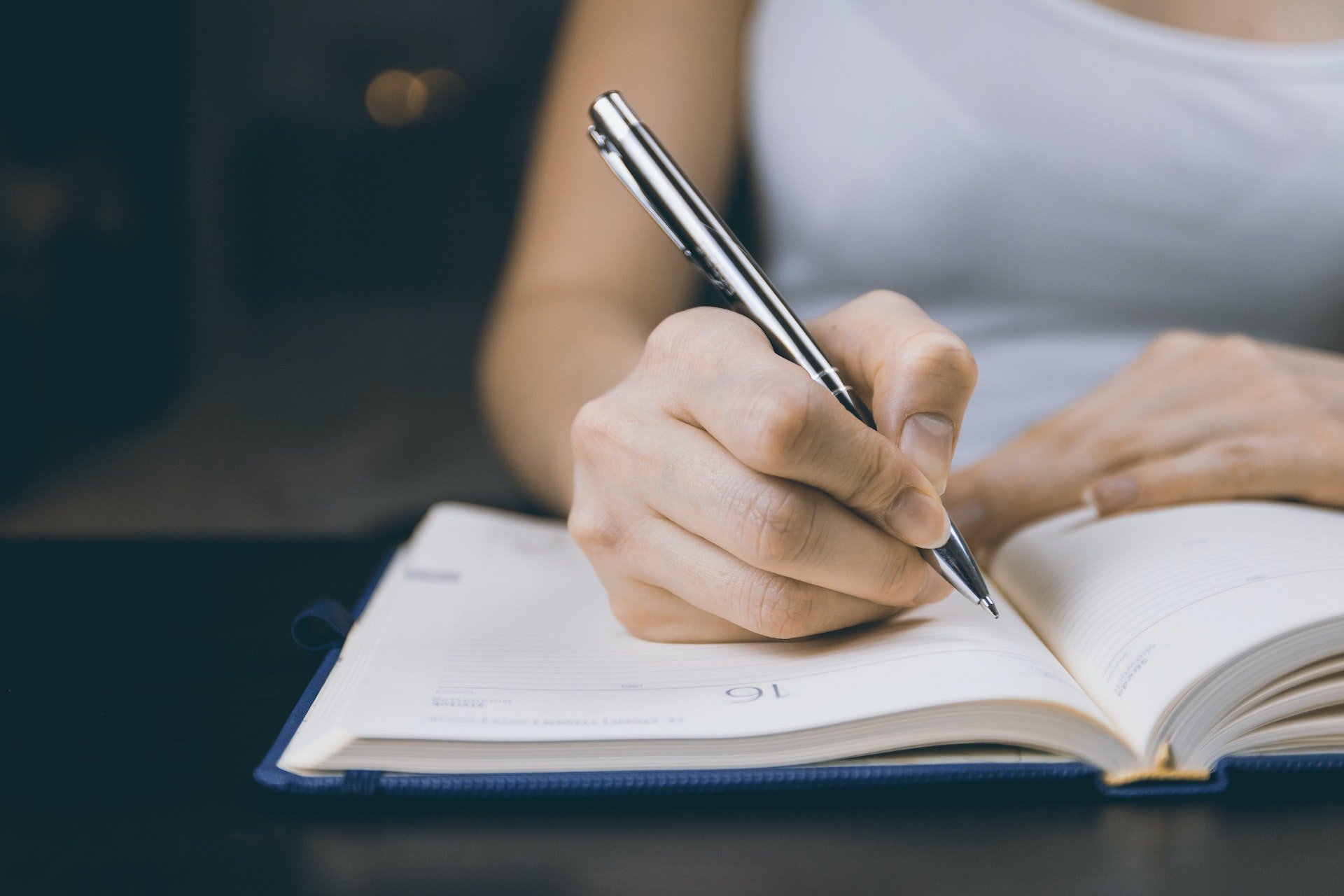For those living with Hand Dystonia, improving quality of life involves diverse treatments, including tailored natural approaches. Medical options like medications, botulinum neurotoxin injections, and surgery vary in effectiveness.
Challenges arise as some patients find limited benefits from traditional treatments due to preferences for noninvasive methods, concerns about side effects, botulinum toxin resistance, or allergies. Research into alternatives, such as Neuroplasticity exercises and meditation, offers hope.
Drawing from 25 years of experience assisting thousands of Hand Dystonia patients, Dr. Joaquin Farias took a significant step by creating an integrative complementary rehabilitation protocol for Hand Dystonia, available online through the Dystonia Recovery Program. This initiative, developed in collaboration with a dedicated group of health providers (also affected by Dystonia), offers a natural and accessible means for many patients worldwide to manage their symptoms efficiently.
About Dr. Farias Neuroplastic Training Approach
Since 1996, Dr. Farias has been providing effective alternative treatments for patients affected by Dystonia by pioneering new theories on Neuroplasticity induced by movement
Dr. Joaquin Farias is a leading specialist treating Dystonia with movement therapy. His personal mission is to enable every patient to be offered the least aggressive and most effective treatment available. Since 1996 Dr. Farias has helped thousands of people to have their lives and livelihoods back after being affected by Dystonia. Dr. Farias has presented his work on Dystonia rehabilitation at Harvard Medical School, McGill University Faculty of Medicine, University of Toronto Rehabilitation sciences Institute, Tokyo University, Toronto Western Hospital, Universidad La Sapienza di Roma and The European Union.
“Dr. Farias is a kind of clinical genius in his work with the Dystonias. I believe, as time evolves, it will be clear that his work is of historical importance.”
— Dr. Norman Doidge M.D.
Author of The brain that changes itself and The brain’s ways of healing
In 2018, Dr. Farias extended his impact through the creation of the Dystonia Recovery online program, making his alternative protocols for Dystonia rehabilitation accessible to anyone in need.
Will Dr. Farias’ Recovery Program help my Hand Dystonia?
Since 2018, more than 8,000 Dystonia patients worldwide have created accounts in our program. We are pleased to report that many of our users affected by hand Dystonia, who have diligently followed the program for a year or more, have experienced a reduction in their symptoms, including a remarkable decrease in Hand Dystonia tension, increased mobility in the hand, the recovery of the ability to write, the recovery of the ability to use different tools or play instruments, and improvement in their emotional well-being. Some of our members consider that they have attained full recovery after a year of practice, while others have continued their training for several years, gradually reducing their symptoms and improving their health and quality of life.
“I have never been so impressed and amazed by a specialist before. Dr Farias’s technique truly works.
Contrary to typical doctors, Dr. Farias understands that when it comes to dystonia (or health in general), many things are related. Dystonia is very complex and it truly takes someone special to connect all the dots.
The best solution to dystonia is not simply a pill or injections, Farias’s technique is a complete lifestyle change coupled with exercises to retrain your muscles and brain. Dr. Farias points out that your stress, the amount of exercise you perform, the health of your stomach, and many other aspects of your life are all related to your dystonia symptoms.
After following his technique for a month I am already witnessing significant improvements,
and truly thank him for his work in this field!!”
Stefan Morisset
Montreal, Canada
Start your Recovery Journey Today
Join the complete online recovery program for dystonia patients.
Start your Recovery Journey Today
Join the complete online recovery program for dystonia patients.
How Neuroplasticity can help you recover from Hand Dystonia
Understanding Neuroplasticity is crucial in Hand Dystonia therapies, enabling the repair of cortical and subcortical circuits, integrating alternative areas for modified functions, and aiding recovery from brain injuries. Neuroplasticity, the brain’s ability to adapt, is pivotal for cognitive and physical well-being. Dr.Farias’ Neuroplastic Training uses simple movements to optimise vital brain circuits making it possible to recover from Hand Dystonia. Patients following our training protocols have experienced unprecedented improvements and full recoveries from Hand Dystonia.
In Hand Dystonia treatment, acknowledging the brain’s capacity to modify itself is key. The cerebral cortex, genetically predetermined for specific functions, can be modulated through experience and learning.
Physiological plasticity involves changes allowing the recovery of affected functions. This includes creating new synapses, functional reorganisation, incorporating new areas into established networks, and recruiting different regions to compensate for losses. The brain adapts through mechanisms like dendrite sprouting, functional reorganisation, and activating redundant pathways.
Patients’ Videos
How the Recovery Process for Hand Dystonia Works
Central to our approach is a comprehensive and integrative brain retraining and rehabilitation strategy, innovatively developed by Dr. Farias to facilitate your journey in managing Hand Dystonia.
Understanding the Protocol
Dealing with Hand Dystonia demands a complex, multi-layered approach for achieving the best outcomes. The foundation of our program is Dr. Farias’ extensive 30-year research in aiding those with Dystonia. This protocol includes a blend of exercises and activities rooted in Neuroplasticity, aimed at retraining brain pathways impacted by Dystonia. To meet the specific needs of individuals with Hand Dystonia, our program also integrates a variety of supplementary exercises, including Taiji, meditation, eye exercises, sensory engagement, breath work, dance, and relaxation methods. These elements are strategically chosen to ensure a comprehensive recovery experience.

Getting Started: Step by Step
1-Foundational Learning: Begin your journey with Dr. Farias’s comprehensive courses in the Education Program. This initial phase grants critical understanding of the principles underlying our methodology and demonstrates how daily practice of straightforward movements can benefit you.
2-Tailored Rehabilitation Plans: Our treatment plans for Hand Dystonia encompass Dr. Farias’ Hand, Arm and Shoulder Exercises, alongside Writing Exercises, Eye Exercises, within a broader framework that includes Dance, Respiration Techniques, Advanced Breathing Practices, Calming Methods, Meditation, Sensory Engagement, and Dietary Advice.
3-Hand and Arm Exercises: Dr. Farias recommends a progressive, easy-to-follow routine starting with basic exercises, gradually advancing to a series of movements aimed at liberating your entire arm, thus alleviating hand or arm constraints. Consistently practicing these movements can stimulate neuroplastic changes in the brain’s structure and function. These exercises, meant to be performed gently and within personal comfort levels, are suitable for all ages and require no prior athletic experience or specific physical condition.
4-Scheduling Your Daily Activities: Set aside a minimum of 45 minutes daily for your exercise regimen—allocate 15 minutes to breathing techniques, 20 minutes for hand or arm exercises, 5 minutes for writing exercises, and an additional 5 minutes for sensory exercises.
5-Dance as Therapy: Integrate dance into your everyday routine, choosing from an array of choreographies specifically designed for various forms of Dystonia. Beyond its physical advantages, dance significantly enhances the healing experience.
6-Methods of Relaxation: Invest time in the Relaxation Program, selecting from an array of options like Music Therapy, Taiji, Yoga, Hypnosis, Meditation, or Kung Fu. The soothing impact of these activities plays a vital role in your comprehensive healing process.
Personalised Progression and Personal Assistance
Remember, recovery is a gradual process, and you’re encouraged to progress at your own pace. The platform offers a supportive community, where you can engage in the comments section and community forum. Here, Dr. Farias’ and his trained staff are ready to address your questions and provide guidance when you need it the most. We are here to help you.

Nutrition
Our Hand Dystonia Nutrition initiative is designed to steer patients towards making knowledgeable food choices aimed at reducing inflammation, improving digestive health, and enhancing overall wellness. This segment of the program offers participants access to comprehensive meal plans and informative videos, which delve into effective ways of modifying existing dietary habits to foster a healthier way of living.
Recognising the uniqueness of each individual’s dietary needs, our program’s recipes are versatile, catering to a range of dietary preferences, including gluten-free and dairy-free options. While not exclusively tailored for Paleo, vegetarian, or vegan diets, these recipes are adaptable to your personal dietary choices, emphasising the reduction of certain foods that may exacerbate Dystonia symptoms.

Emotional Wellbeing
Understanding that Dystonia affects crucial areas of the brain responsible for motion, emotional regulation, behavior, and cognitive functions, Dr. Farias’ approach incorporates a comprehensive method that addresses the emotional challenges that coexist with physical symptoms.
Those battling Hand Dystonia may encounter a spectrum of emotional difficulties, including pervasive sadness, isolation, and psychological barriers, often linked to deficits in the prefrontal cortex. This can lead to a significant occurrence of depression and other emotional disorders.
The program aims to break the cycle of stress and symptoms, with a focus on exercises, relaxation techniques, and tackling emotional stress. This approach is designed to simultaneously enhance both motor functions and emotional health.
Dr. Farias’ method highlights the critical connection between psychological aspects and the healing process, fostering optimism for a more positive future. Our program stresses compassionate care for both the physical and emotional facets during the journey to recovery from Dystonia.
Dancing Movement Therapy
In Dr. Farias’ recovery framework, dance and movement therapy are highlighted for their therapeutic value in addressing Hand Dystonia. Integrating therapeutic movements into exercise and dance routines is central to the program, targeting the movement challenges associated with Hand Dystonia. The positive influence of engaging in enjoyable activities, such as dance, on neural pathways is a key focus. The platform features professional dance instructors, some of whom are also affected by Dystonia, who create therapeutic choreographies that are mindful of physical limitations. Dance and movement serve as a form of therapy, offering positive feedback and strengthening the neural circuits impaired by Hand Dystonia.

Your Journey Begins Now
Embark on your journey to recovery by signing up for the Dystonia Recovery Program. Watch the videos regularly, design your personalised training program, and actively participate in the community. Together, we’ll unlock the door to a future free from the constraints of Hand Dystonia.
Start your Recovery Journey Today
Join the complete online recovery program for dystonia patients.
Testimonials
Leonardo Matsuda, Film Director:
“After going through a series of treatments with movement disorder neurologists, hand doctors, and other specialists, I still weren’t able to find an efficient way to treat Focal Dystonia.
I had frustrations and concerns on many levels. The biggest concern though, was the one caused by my lack of understanding of how Dystonia actually worked.
Through Dr. Farias workshop in Toronto, I was finally able to comprehend details on how Focal Dystonia functions in the brain and why it is triggered. His Method of Neuroplastic training is revolutionary and positively changed my outlook on Dystonia. Most importantly, however, was how practical and down-to-earth his technique was. During our Workshop training sessions, I was astounded to experience first hand, Dr. Farias’ one-on-one approach with the patients and how immediately a major recovery and positive outcome would happen.
Dr. Farias excellent method not only made a deep impact on my understanding on Dystonia but also on my journey of self-discovery and betterment of the quality of my professional and personal life.”
Paula Clark, Barrie, ON Canada:
“I was diagnosed with Dystonia 28 years ago, when I was 18 years old. I have been unable to use my left hand because of the shaking in my shoulder and arm.
In the summer of 2015, I found Dr. Farias’ YouTube video while searching for something to help with my Dystonia. By this time, I have exhausted every avenue to try helping me to regain a normal life.
I then proceeded to do some research on Dr. Farias and his work. In April 2016, I had the great fortune of attending his 4 day intensive training course at his Toronto office.
Since meeting with him, I am learning to retrain my brain to use my left hand by controlling my shaking with simple movement and coordination techniques that he taught me during our training sessions. I am also excited to say that I can type this testimonial with both hands, something I have been unable to do in almost 3 decades. Everyday, I am getting better and re-learning how to use my left hand again without shaking.
Although, Dr. Farias is a world renowned practitioner who has helped thousands of patients, he will treat you like you are his only patient. His training sessions are intensive but he is always respectful, caring and patient. I enjoyed every session immensely and I couldn’t wait for the next since I was so amazed of what I was capable of doing again in such a short amount of time. My husband sat in during my sessions and I was so thankful that he was there to witness my progression. He is also able to help me with my continued training at home. From the first time you meet Dr. Farias and every time after, you will feel the genuineness that he truly wants to help you get well as well as, regain your confidence.
I am truly thankful for Dr. Farias’ help showing me how to control my movements. As everyday passes, I am experiencing the life that I have constantly prayed for. A life of feeling and looking normal and being in control. I will forever be grateful – thank you!!!!”
Nicole Charland, Nurse, (London, Ontario, Canada):
“I recently had the fortunate experience to spend 4 days with Dr. Farias in Toronto. Through his guidance, I was able to obtain significant control of my right hand/right forearm in a very short amount of time. From one day to the next, I saw exponential progress. I did not think that it would be possible to have so much recovery, so quickly!
Dr. Farias was able to explain the cause of focal dystonia as well as the process for recovery of focal dystonia using simple explanations that I could easily understand, and apply to my recovery. Despite seeing various healthcare practitioners , I feel like I completely understand this condition for the first time. Before meeting Dr. Farias, I had tried many, many different modalities, along with botox with poor outcomes. I was so discouraged.
What left a remarkable impression on me is that Dr. Farias has made it his passion to help others recover from this debilitating and extremely frustrating condition. It shows through his desire that his patient understand the intricate details of this condition, his ability to coach with patient determination, his respect, and his sense of humour. I feel like I have been given a second chance at recovery, thanks to Dr. Farias.”
Maria Moore, Nurse, (Melbourne, Australia):
“Living with writer’s cramp (task specific focal dystonia) was a frightening ordeal, as it was threatening the end of my nursing career and affecting many other aspects of life I enjoyed.
I was surprised at how neurologists were unable to unlock this mysterious disorder, with no relief from seeing a range of alternative therapists and other allied health professionals either.
Botox was not a suitable option, after hearing of its side effects, which would have ended my nursing in itself. I felt like I was running a 2 year marathon with no water, until I decided it was worth the risk to travel to Spain and meet Dr Farias for treatment.
This experience was truly the “drink station” I had longed for. I was captivated by his simple explanations and analogies, with a model for rehabilitating so unique and effective; I was writing a few words neatly by the second day.
With the help of his incredible patience and gentle coaching, I was shocked by my continued progress over the 4 days.
Dr Farias has given me all the tools I need to complete this enduring challenge, along with some fine tuning to lifestyle and continued practice of his methods. His passion and success in helping people with this problem is no mirage; he is the “real deal”. I have no words adequate enough to express my deep gratitude to him.”
Nick Brooks, Scotland:
“I came to Toronto not really knowing what to expect and, if I’m honest, wasn’t expecting anything to change for me. I’ve already tried a number of different therapies, all with disappointing results. Dr Farias’ sessions were different; firstly his seemingly universal understanding of what dystonia is (and what it isn’t) was a genuine surprise to me. His easy sense of humour and engagement with our group of disparate clients made it less daunting to walk in to the workshops each morning, and I think every single person attending had some sort of breakthrough moment with their particular version of dystonia. I went from slightly bemused, occasionally perplexed, to flag-waving convert when I typed with both hands for the first time in 6 years. For me, this was a kind of miracle. I know I have plenty of work ahead of me to make progress, but i feel Dr Farias has given me the tools to make the recovery I so badly want…I cannot recommend his workshops highly enough!”
Start your Recovery Journey Today
Join the complete online recovery program for dystonia patients.



